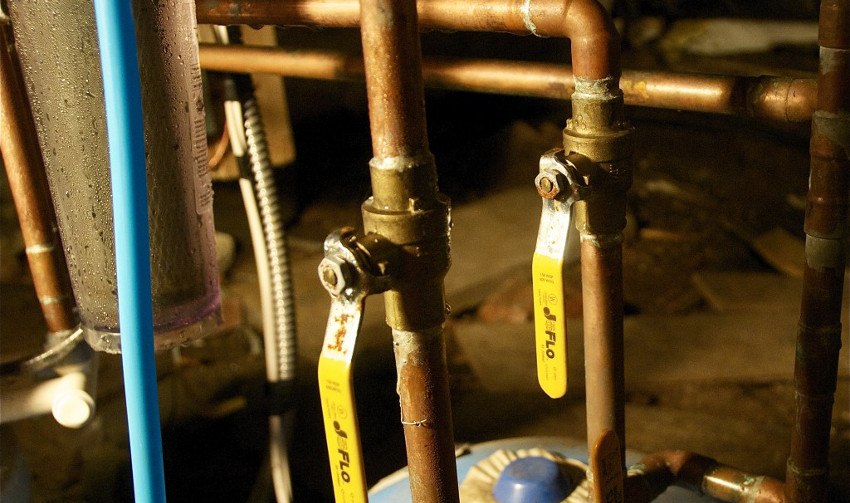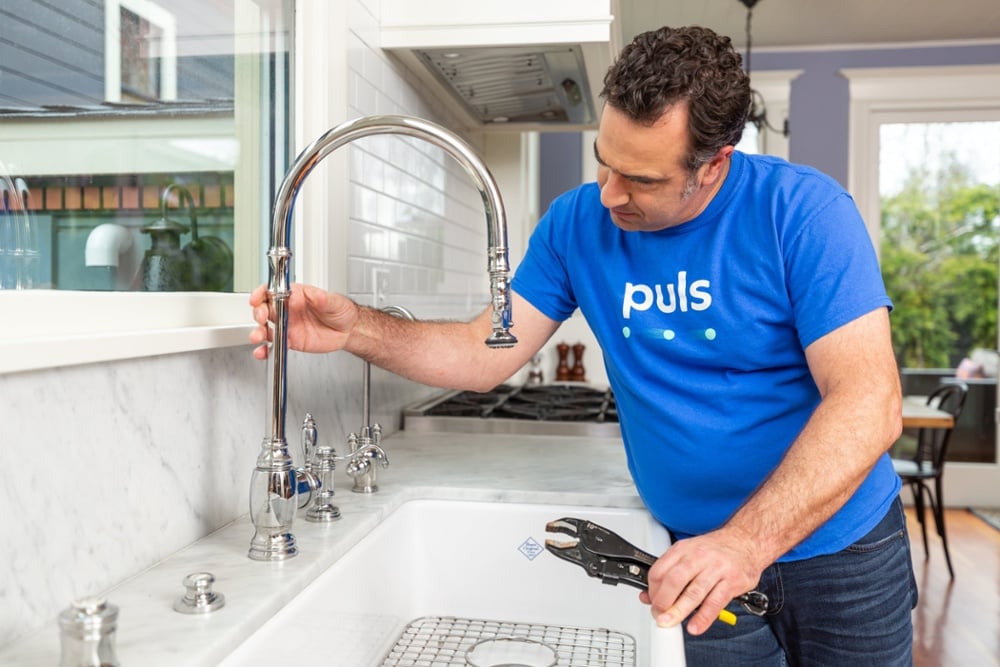What are your opinions concerning Diagnose Unwanted Plumbing Noises?

To diagnose noisy plumbing, it is necessary to identify first whether the undesirable audios happen on the system's inlet side-in other words, when water is transformed on-or on the drain side. Sounds on the inlet side have varied reasons: excessive water stress, worn valve and also tap parts, improperly linked pumps or other home appliances, incorrectly put pipeline fasteners, and also plumbing runs containing a lot of limited bends or other constraints. Noises on the drainpipe side usually originate from poor location or, similar to some inlet side sound, a design consisting of tight bends.
Hissing
Hissing sound that occurs when a faucet is opened a little generally signals extreme water stress. Consult your neighborhood water company if you presume this problem; it will be able to tell you the water stress in your location and can set up a pressurereducing shutoff on the incoming supply of water pipe if required.
Thudding
Thudding noise, typically accompanied by trembling pipelines, when a tap or device shutoff is switched off is a problem called water hammer. The noise and vibration are caused by the reverberating wave of stress in the water, which instantly has no area to go. Sometimes opening up a valve that discharges water rapidly into an area of piping having a constraint, elbow joint, or tee fitting can create the very same condition.
Water hammer can normally be healed by mounting fittings called air chambers or shock absorbers in the plumbing to which the problem valves or faucets are linked. These gadgets enable the shock wave produced by the halted flow of water to dissipate in the air they contain, which (unlike water) is compressible.
Older plumbing systems may have short vertical sections of capped pipe behind walls on faucet runs for the exact same function; these can ultimately loaded with water, reducing or destroying their efficiency. The remedy is to drain the water system totally by turning off the main water valve and opening all taps. Then open the main supply shutoff and also close the faucets one at a time, beginning with the faucet nearest the valve and also finishing with the one farthest away.
Chattering or Screeching
Intense chattering or screeching that occurs when a shutoff or tap is activated, which normally disappears when the fitting is opened totally, signals loosened or defective internal parts. The remedy is to change the shutoff or faucet with a new one.
Pumps and devices such as cleaning makers as well as dishwashers can move electric motor noise to pipes if they are poorly linked. Link such items to plumbing with plastic or rubber hoses-never inflexible pipe-to isolate them.
Other Inlet Side Noises
Squeaking, squealing, scraping, snapping, as well as tapping generally are brought on by the growth or contraction of pipelines, normally copper ones supplying hot water. The audios happen as the pipes slide versus loose bolts or strike neighboring home framing. You can usually identify the location of the trouble if the pipes are exposed; simply comply with the audio when the pipes are making noise. More than likely you will discover a loosened pipe wall mount or an area where pipes exist so close to flooring joists or other mounting items that they clatter against them. Affixing foam pipe insulation around the pipelines at the point of get in touch with should treat the issue. Be sure bands and hangers are safe and secure as well as provide appropriate support. Where feasible, pipe bolts ought to be affixed to enormous architectural aspects such as structure walls rather than to mounting; doing so minimizes the transmission of resonances from plumbing to surfaces that can intensify and move them. If attaching bolts to framing is inevitable, cover pipelines with insulation or other resistant material where they call fasteners, as well as sandwich completions of new fasteners between rubber washers when mounting them.
Correcting plumbing runs that suffer from flow-restricting limited or numerous bends is a last option that must be embarked on just after getting in touch with a knowledgeable plumbing contractor. Sadly, this circumstance is rather typical in older homes that might not have actually been built with indoor plumbing or that have seen a number of remodels, specifically by beginners.
Drain Noise
On the drain side of plumbing, the chief objectives are to eliminate surface areas that can be struck by dropping or hurrying water and to insulate pipes to include inevitable audios.
In brand-new building and construction, bathtubs, shower stalls, toilets, as well as wallmounted sinks as well as containers must be set on or versus resistant underlayments to lower the transmission of audio with them. Water-saving bathrooms as well as taps are much less loud than standard versions; install them instead of older types even if codes in your area still permit using older components.
Drains that do not run up and down to the cellar or that branch right into horizontal pipe runs supported at floor joists or other framing existing specifically frustrating noise problems. Such pipes are large enough to emit substantial vibration; they also carry significant amounts of water, which makes the situation worse. In new building, specify cast-iron soil pipelines (the huge pipelines that drain pipes commodes) if you can manage them. Their enormity has a lot of the sound made by water travelling through them. Additionally, stay clear of transmitting drains in walls shown bed rooms as well as rooms where people gather. Walls containing drainpipes should be soundproofed as was defined previously, utilizing dual panels of sound-insulating fiber board and wallboard. Pipes themselves can be covered with unique fiberglass insulation made for the purpose; such pipelines have an invulnerable vinyl skin (sometimes having lead). Outcomes are not constantly adequate.
WHY IS MY PLUMBING MAKING SO MUCH NOISE?
This noise indeed sounds like someone is banging a hammer against your pipes! It happens when a faucet is opened, allowed to run for a bit, then quickly shut — causing the rushing water to slam against the shut-off valve.
To remedy this, you’ll need to check and refill your air chamber. Air chambers are filled with — you guessed it — air and help absorb the shock of moving water (that comes to a sudden stop). Over time, these chambers can fill with water, making them less effective.
You’ll want to turn off your home’s water supply, then open ALL faucets (from the bathroom sink to outdoor hose bib) to drain your pipes. Then, turn the water back on and hopefully the noise stops! If you’re still hearing the sound, give us a call to examine further.
Whistles
Whistling sounds can be frustrating, as sometimes the source isn’t easily identified. However, if you can pinpoint which faucet or valve that may be the cause, you’ll likely encounter a worn gasket or washer — an easy fix if you replace the worn parts!Whistling sounds from elsewhere can mean a number of things — from high water pressure to mineral deposits. Your best plan of attack here is to give our plumbing experts a call. We’ll be able to determine where the noise is coming from and what the cause may be, then recommend an effective fix!
Cracks or Ticks
Cracking or ticking typically comes from hot water going through cold, copper pipes. This causes the copper to expand resulting in a cracking or ticking sound. Once the pipes stop expanding, the noise should stop as well.
Pro tip: you may want to lower the temperature of your water heater to see if that helps lessen the sound, or wrapping the pipe in insulation can also help muffle the noise.
Bangs
Bangs typically come from water pressure that’s too high. To test for high water pressure, get a pressure gauge and attach it to your faucet. Water pressure should be no higher than 80 psi (pounds per square inch) and also no lower than 40 psi. If you find a number greater than 80 psi, then you’ve found your problem!
Next step is to give us a call in order to install a pressure regulator. Trust us, you don’t want to wait to resolve this issue. Not only is the sound annoying, but high water pressure can be destructive to your home — including damaging certain appliances, like your washer and dishwasher.
Dripping
You might be accustom to the slow quiet drip your kitchen faucet makes. You might have even tuned out your bathroom sink dripping and drabbing all day long — but it’s time to find its cause.
A slow drip could signify a variety of easy to fix issues, such as a worn out O ring, or loose part. And by ignoring the drip, you could be wasting up to 2,000 gallons of water a year! So start conserving water — get it looked at ASAP.
https://www.pwessig.com/blog/2018/december/why-is-my-plumbing-making-so-much-noise-/

Do you really like reading about Why Do My Plumbing Pipes Make A Knocking Noise? Write feedback down the page. We will be interested to know your views about this blog post. We are looking forward to see you back again later on. Loved our content? Please share it. Help another person check it out. I praise you for your time. Visit again soon.
Book Inspection